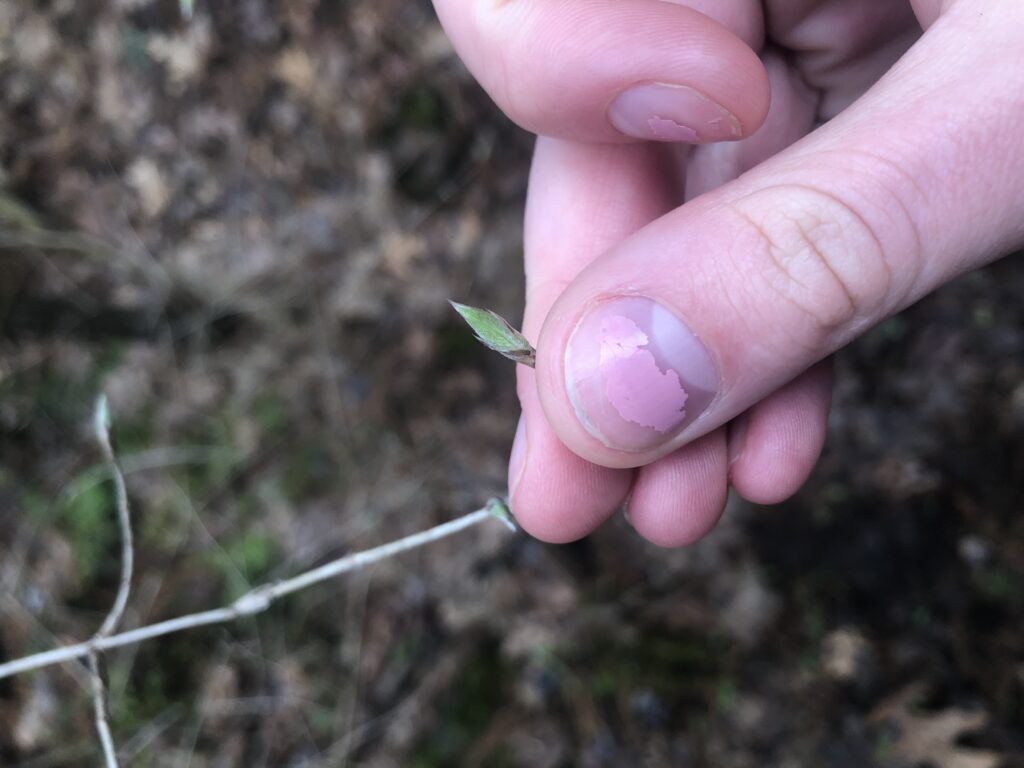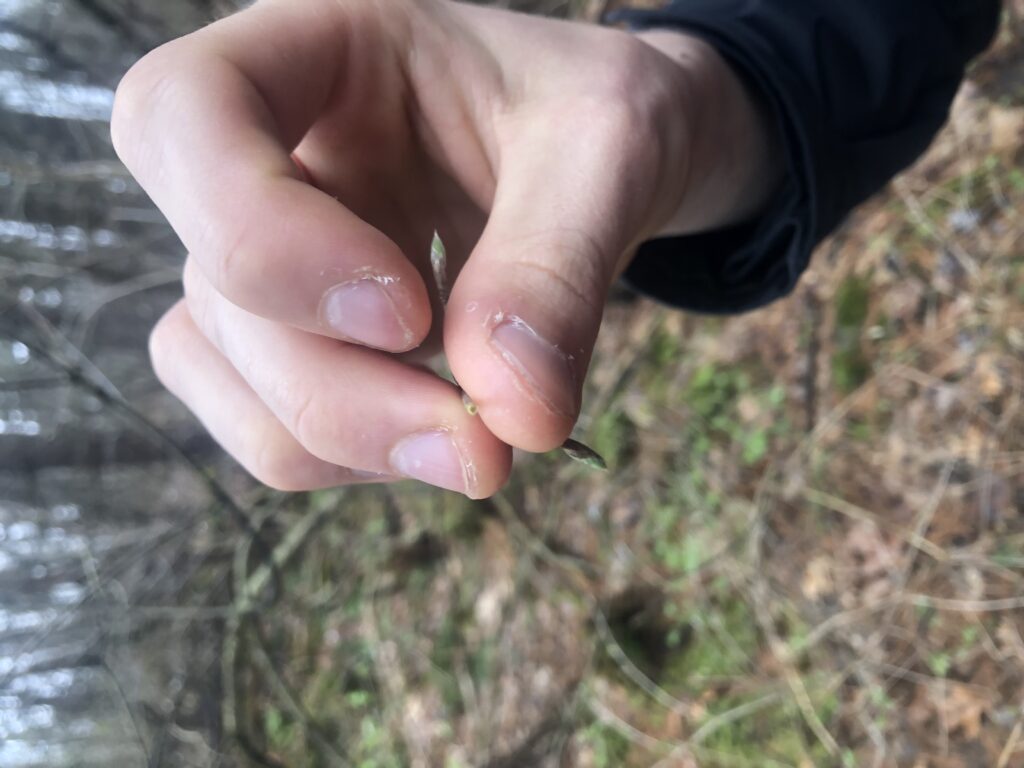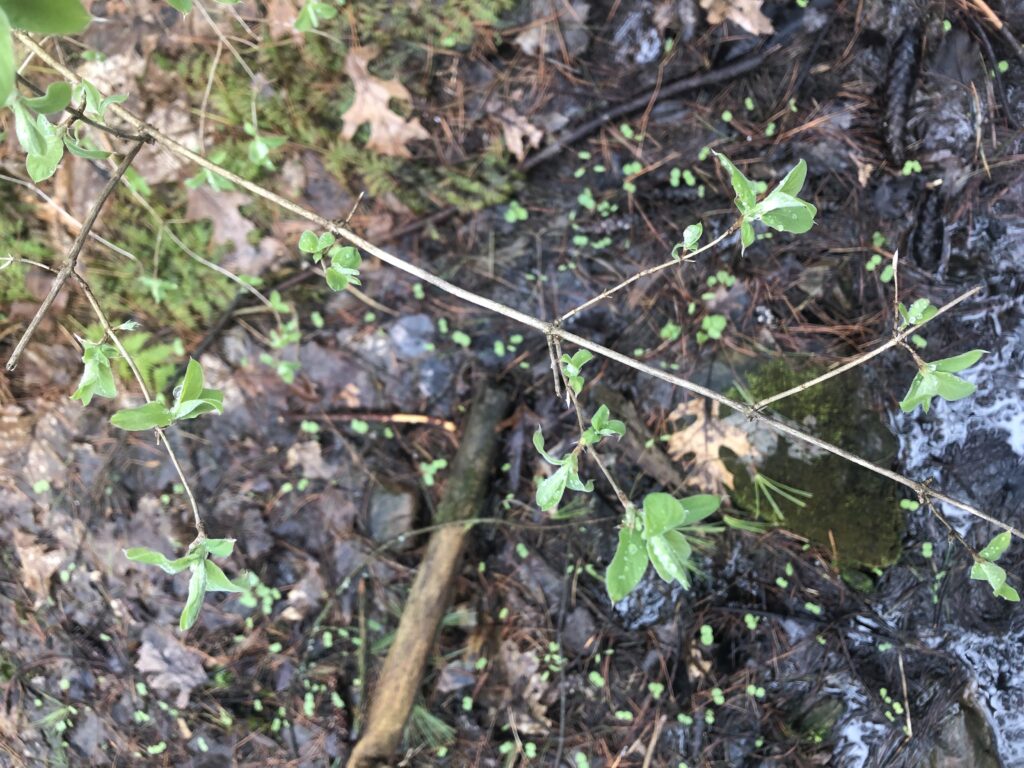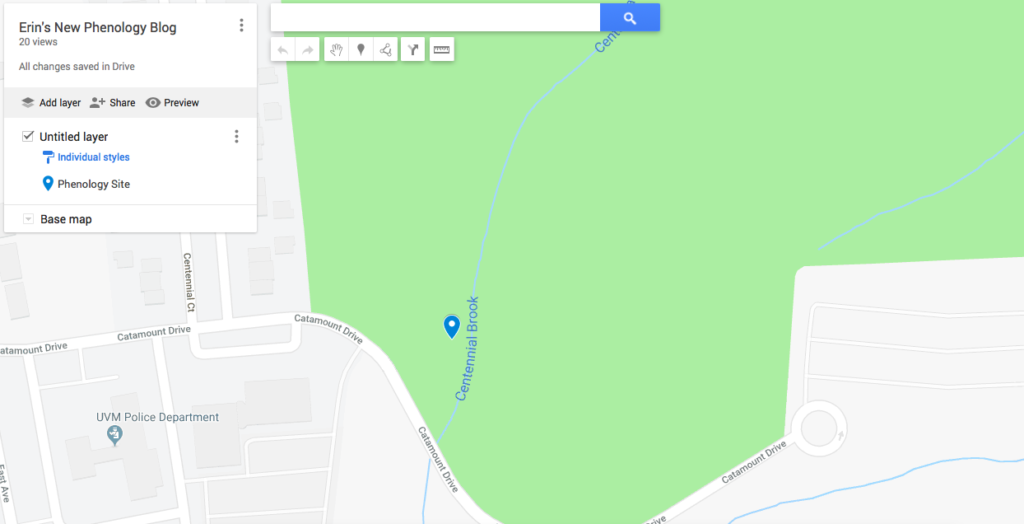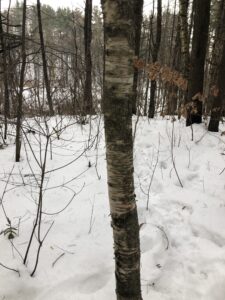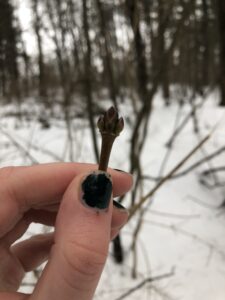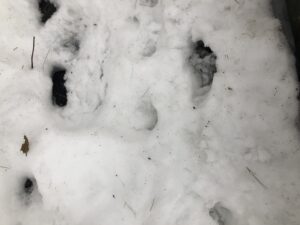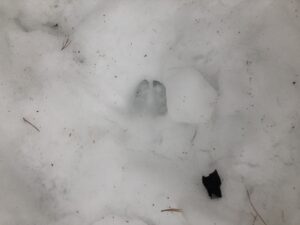I visited Centennial Woods during my second week at UVM. Since then, the Woods has become a place of familiarity, learning, excitement, sadness, and calm. As I walked to my place this past week I took note of the green buds and leaves and remembered what they looked like just eight months ago. I always feel at home when I’m walking through nature and the woods remind me of walks with my mom. Over the past year I have visited Centennial a number of times, so many that in a way I do feel a sense of place there, albeit a briefly felt sense. I am excited for the next three years to pass, and in doing so to promote a deeper sense of place at my site.
I would say that it is easy to notice an intertwining of nature and culture in Centennial Woods. As you walk through, you can notice succession in the regeneration of pine and hemlock groves following the agricultural land use of the 18 and 1900’s. You can also find remnants of sheepherders in barbed wire stuck to growing trees. It is important to notice that s you walk through, there is little to notice of the land’s previous tenets, the Abenaki. The lack of physical evidence of their lives in the Champlain Valley is troubling, and representative of numerous social issues and dynamics surrounding the viewing of native cultures. It is also representative of indigenous land ethics, particularly of reciprocity with the land and neglecting to leave permanent traces of their presence. Additionally, in more recent years, Centennial has become a hub of ecological research culture here at the University of Vermont. The existence of this blog, and the blogs of my peers, is evidence of this intertwining of nature and culture. And for this, I am thankful.
As far as phenological changes go in the first week of May, there is so much going on that it is hard to pinpoint any specific changes since the week prior. I will say though that the fiddleheads are unfurling, honeysuckle are continuing to bud alongside maples. I am excited for the dynamics of summer to kick into gear, pushing the buds of the trees towards the sun.

